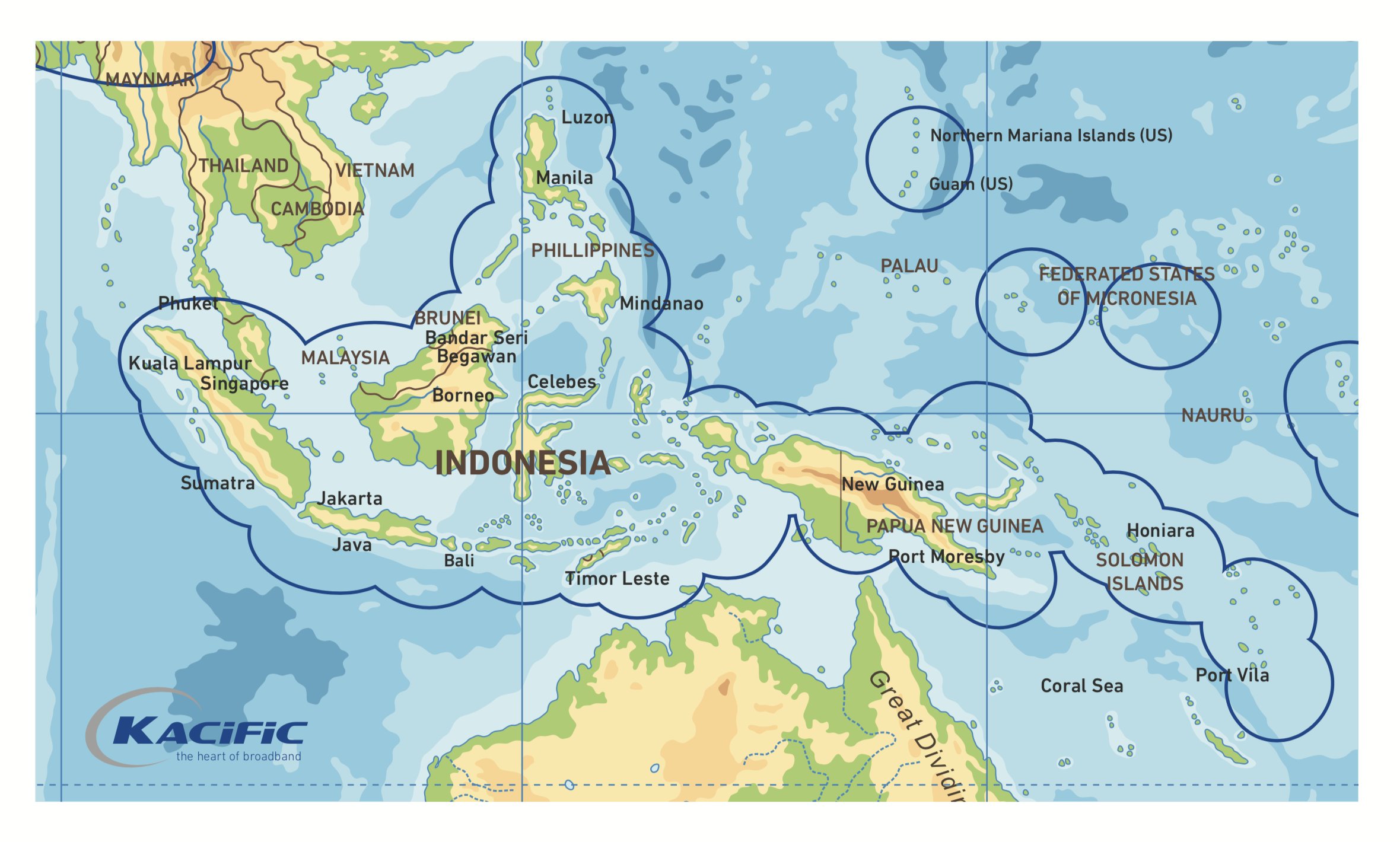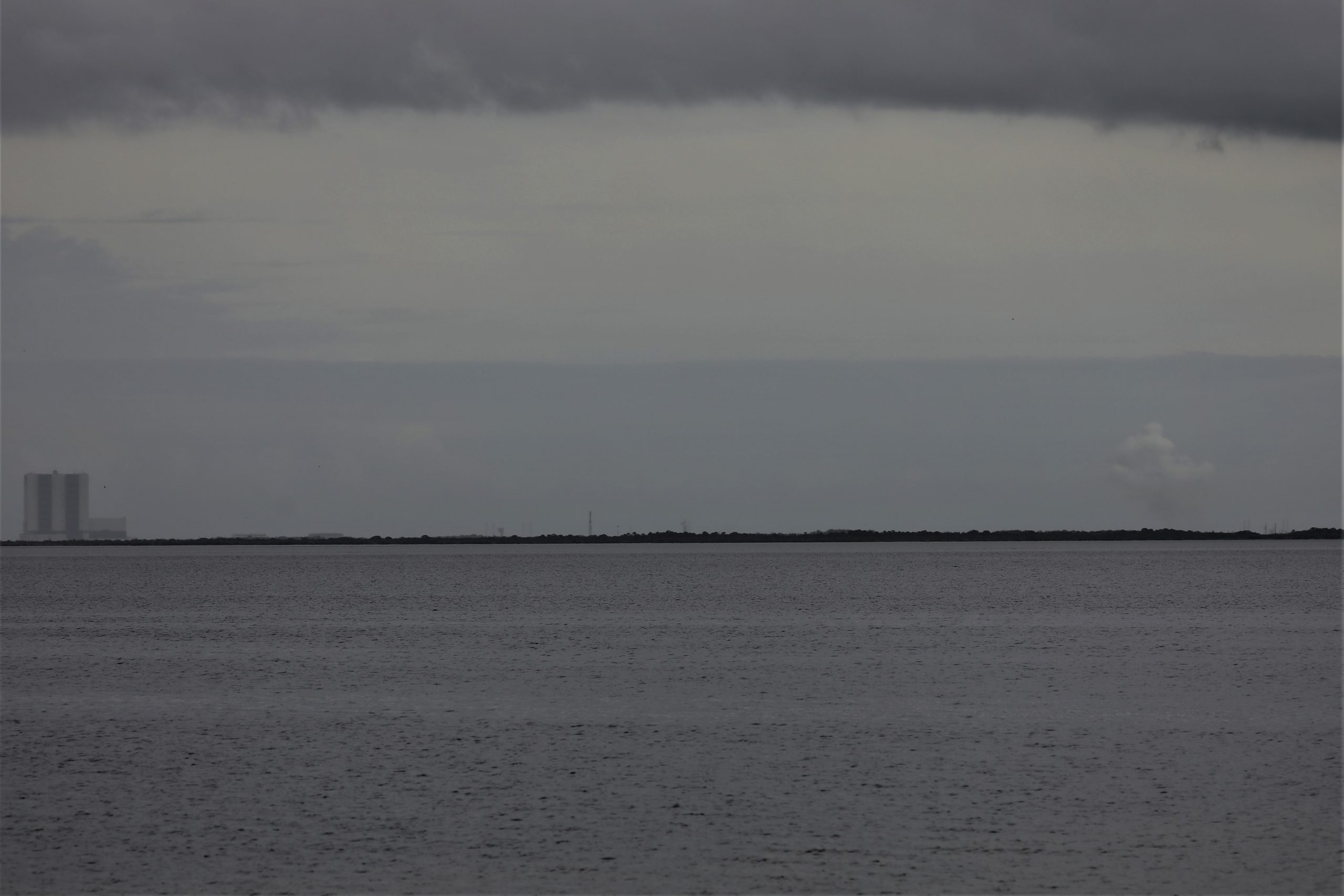
For SpaceUpClose.com & RocketSTEM
Titusville, FL- A successful static fire test at lunchtime today Friday the 13th under gloomy skies of a twice flown Falcon 9 booster by SpaceX sets up the nighttime launch of the Boeing-built JCSAT-18/Kacific-1 broadband internet comsat for Japan and the Asia-Pacific region on Monday, Dec. 16 – as the opening salvo of a double-barreled series of blastoffs next week on the Florida Space Coast; that concludes with the historic first blastoff of Boeing’s Starliner astronaut ferryship on Friday, Dec. 20.
And the weather outlook for both is currently quite good at the Cape.
So it could be a great opportunity to catch an eyewitness glimpse of two exciting rocket launches in the early evening and at sunrise with your own eyeballs – if you can make your way to the Space Coast and stay a few days during this pre-Christmas holiday season.
SpaceX is now targeting liftoff of the Falcon 9 rocket at 7:10 p.m. EST Monday (0010 GMT Tuesday) with JCSAT-18/Kacific-1 broadband internet comsat from Space Launch Complex 40 at Cape Canaveral Air Force Station in Florida, for Tokyo-based SKY Perfect JSAT Corporation and Kacific Broadband Satellites Group.
Amidst continuing rain showers and threatening skies and an apparent delay from noonish SpaceX engineers briefly ignited all 9 Merlin 1D first stage engines at 1:20 p.m. EST (1820 GMT) Friday, Dec. 13 on their recycled Falcon 9 first stage booster for a hold down static fire test at Space Launch Complex-40 to affirm its readiness for launch next week Monday, Dec. 16.
I watched the engine test from nearby in Titusville, Florida under hazy and foggy conditions and thick cloudy skies and observed the barely visible exhaust plume and vapor cloud emanating from the bottom of the booster that quickly wafted overhead.
The off white grayish plume rose and drifted northwards towards the iconic Vehicle Assembly Building (VAB) from my perspective along the Indian River Lagoon about 13 miles away.
Enjoy our Space UpClose wide and zoomed in eyewitness photos of the gloomy but exciting scene – perfectly suited for the Friday the 13th setting.
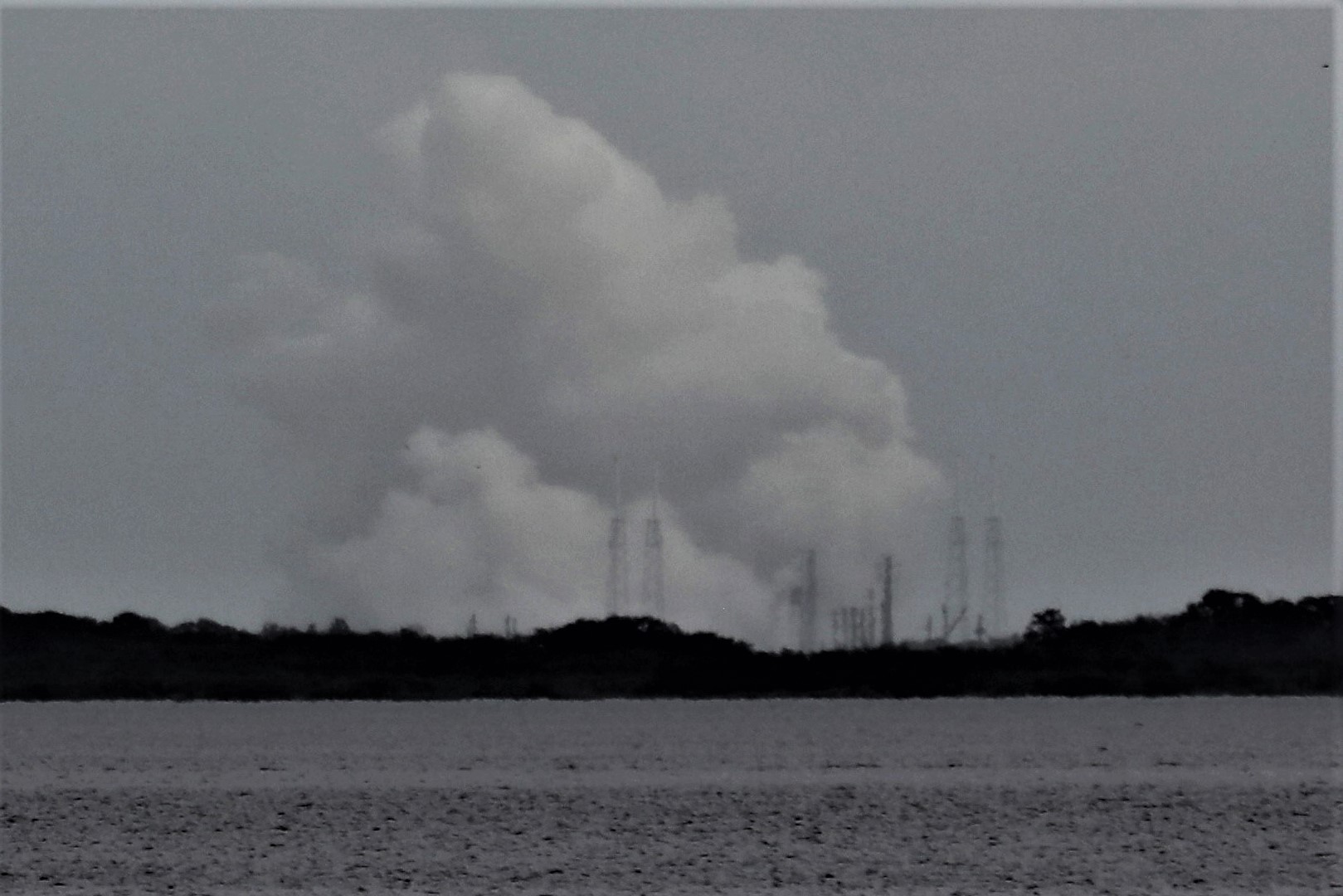
Due to the windswept conditions I was unable to hear the rockets rumble as it came to life with about 1.7 million pounds of thrust – which we often hear some 30 seconds or so after the engine ignition.
Based on the vapor cloud growth, appearance and dissipation it seemed to last about the normal time of some three seconds or so.
The vapor cloud swirled around and grew for perhaps 30 second before dissipating and disappearing in roughly a minute into the hazy and gloomy clouds.
“Static fire test of Falcon 9 complete-targeting December 16 for launch of JCSAT-18/Kacific1 from pad 40 in Florida,” SpaceX tweeted.
“The booster supporting this mission previously supported the CRS-17 and CRS-18 missions.”
Those two flights on CRS-17 and CRS-18 involved the SpaceX Dragon on cargo resupply missions for NASA to the International Space Station (ISS).
The booster supporting this mission previously supported the CRS-17 and CRS-18 missions pic.twitter.com/BDtOZOxZ9J
— SpaceX (@SpaceX) December 13, 2019
Both those cargo missions launched earlier this year on the Falcon 9 now recycled to a third mission for the Dec. 16 comsat launch for SKY Perfect JSAT Corporation and Kacific Broadband Satellites Group.
And SpaceX just launched the CRS-19 resupply mission for NASA to the ISS last week on Dec. 5.
Read our articles and enjoy all our Space UpClose photos and coverage of all 3 missions and more.
The rocket will now be lowered horizontal and rolled back down the ramp and returned to the pad 40 hanger to attach the commercial comsat spacecraft housed inside the payload fairing.
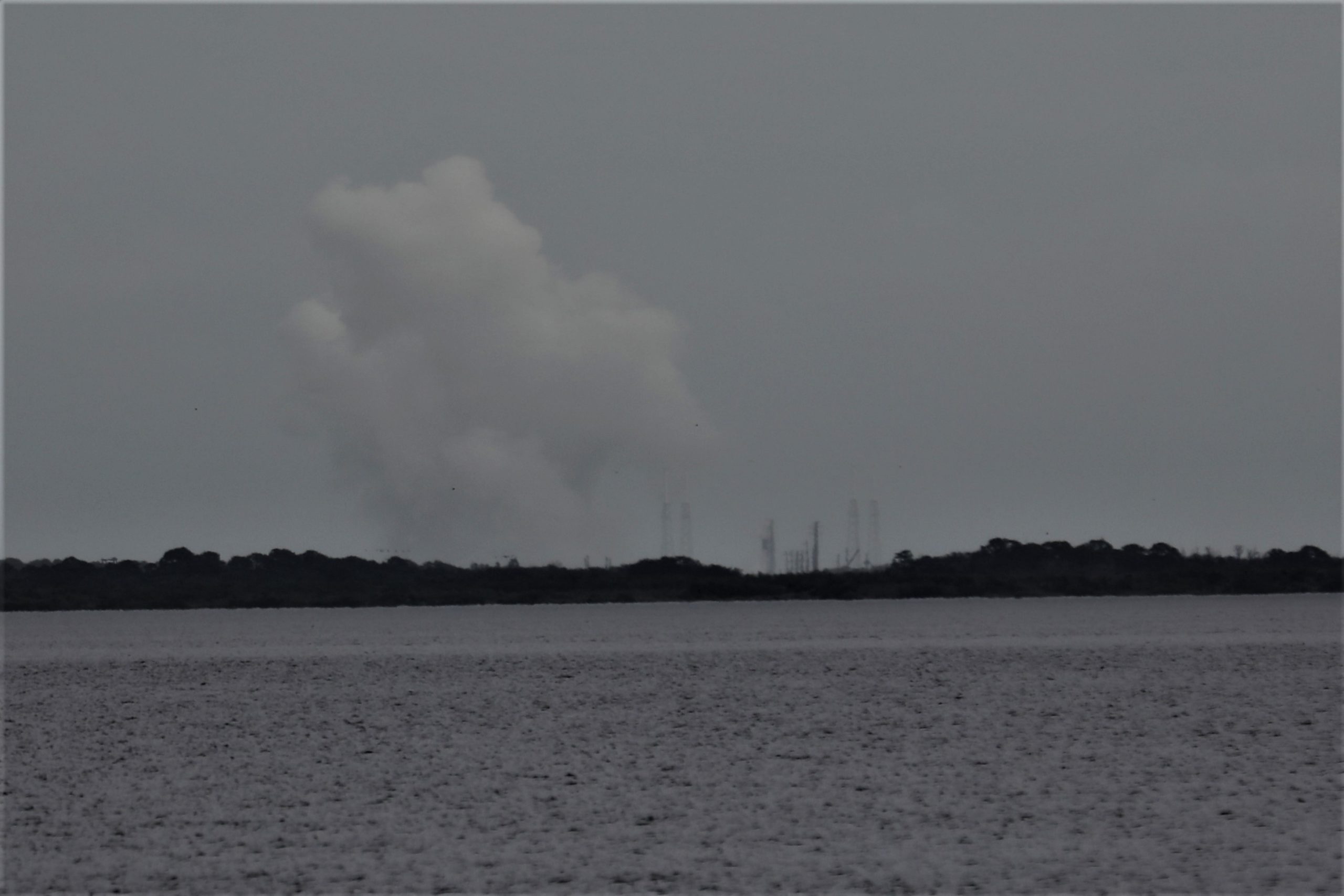
The launch window for the SpaceX Falcon 9 rocket opens at 7:10 p.m. EST Monday (0010 GMT Tuesday) with JCSAT-18/Kacific-1 broadband internet comsat from Space Launch Complex 40 at Cape Canaveral Air Force Station in Florida.
The window extends 88 minutes until 8:38 p.m. EST (0138 GMT Tuesday).
The weather is currently predicted to be excellent with a 90% chance of acceptable weather conditions forecast by Air Force meteorologists.
The launch will be the 13th of the year for SpaceX coming just 11 days after launch of the CRS-19 mission.
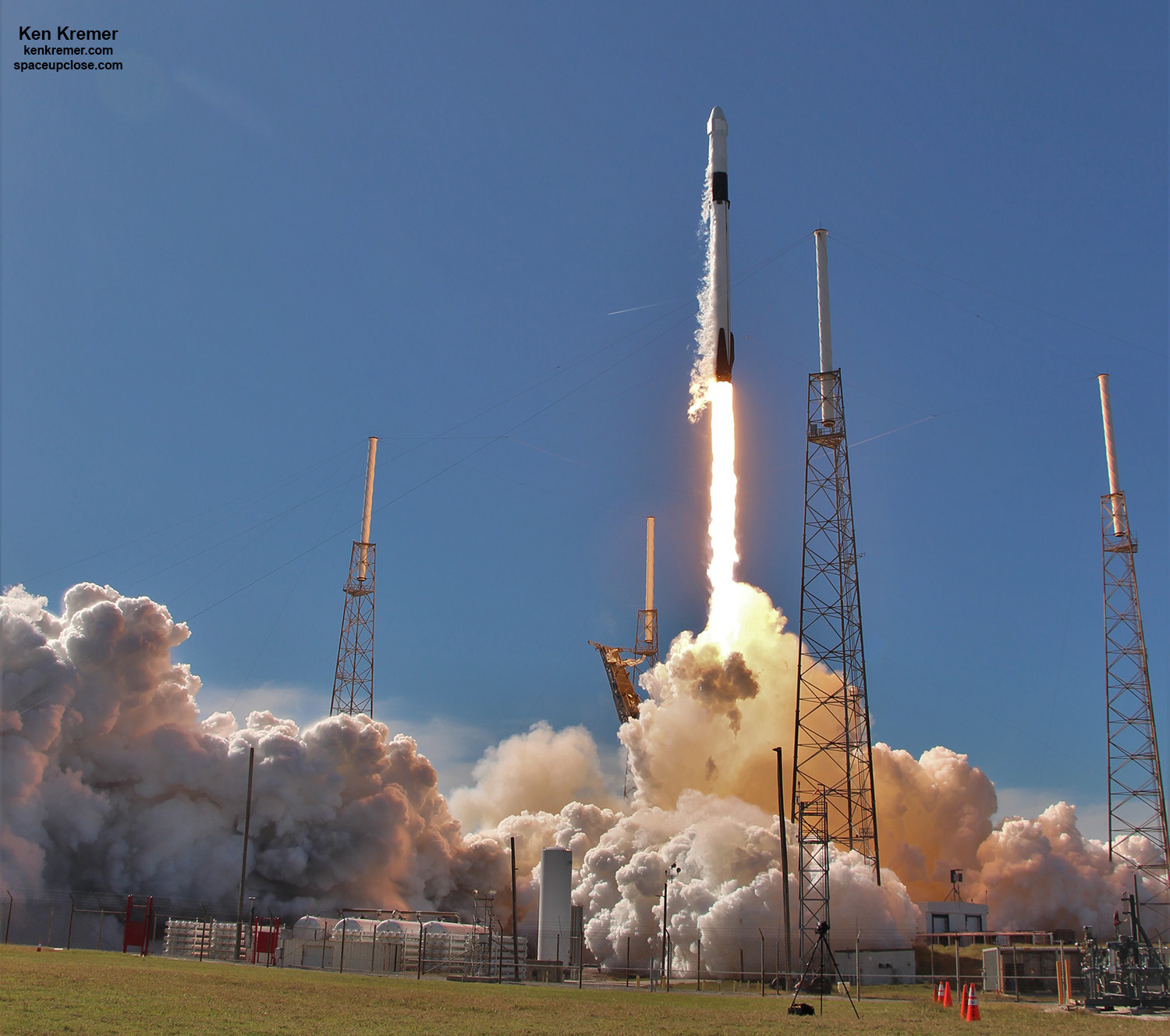
At 11 days it also marks the fastest turnaround for SpaceX launches from the same – namely pad 40 on Cape Canaveral.
It is expected that SpaceX will attempt to recover and soft land the Falcon 9 first stage on the ‘Of Course I Still Love You’ (OCISLY) droneship about 8 minutes after liftoff.
SpaceX is also expected to attempt to recover the payload fairings with their fairing catching ships GO MS TREE and GO MS CHIEF.
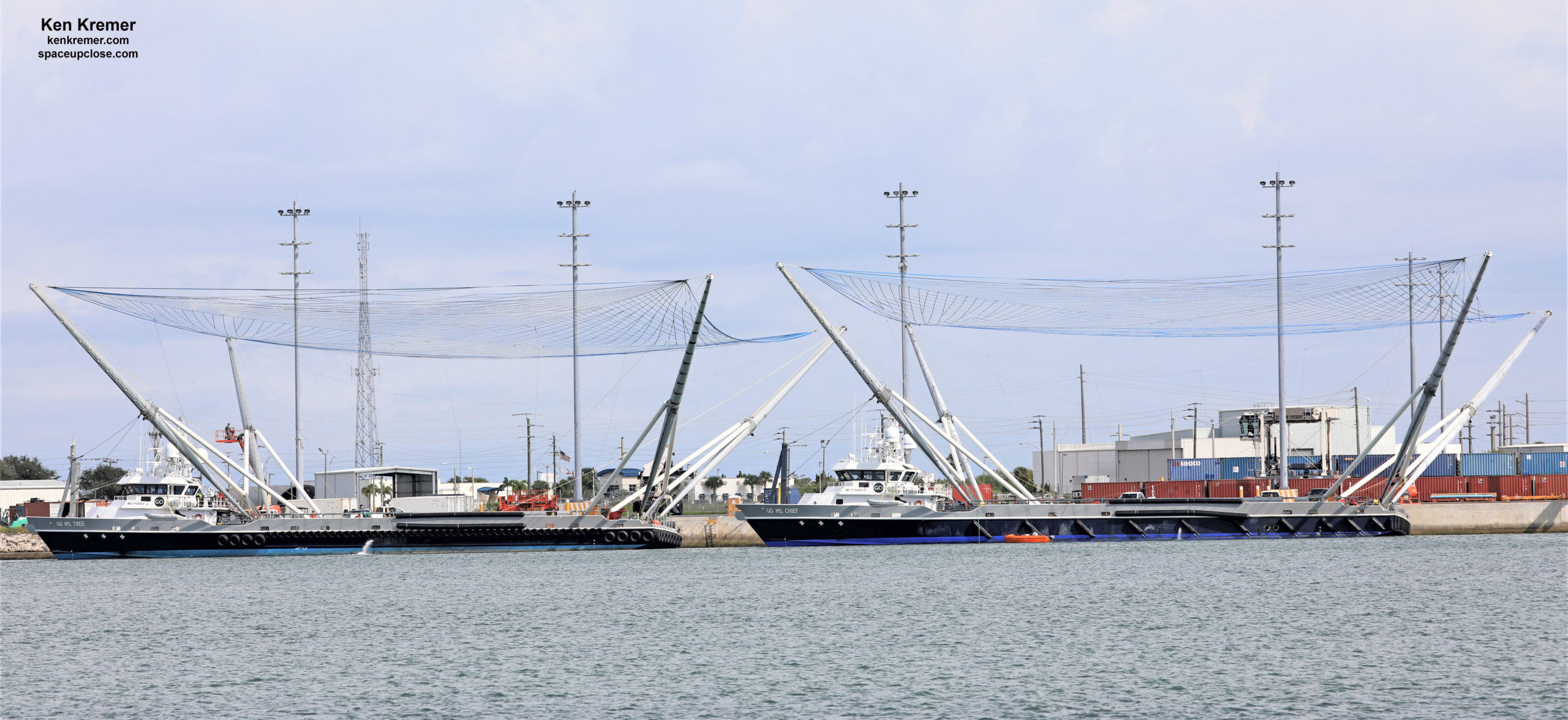
The JCSAT-18/Kacific-1 spacecraft satellite is based on the Boeing 702 satellite platform and will expand communication capabilities for mobile telephone, data and internet users throughout the Asia-Pacific region.
The 15,335-pound (6,956-kilogram) JCSAT-18/Kacific-1 spacecraft will launch into an elliptical transfer orbit, then use its on-board liquid-fueled engine to maneuver into a circular geostationary orbit more than 22,000 miles (nearly 36,000 kilometers) over the equator.
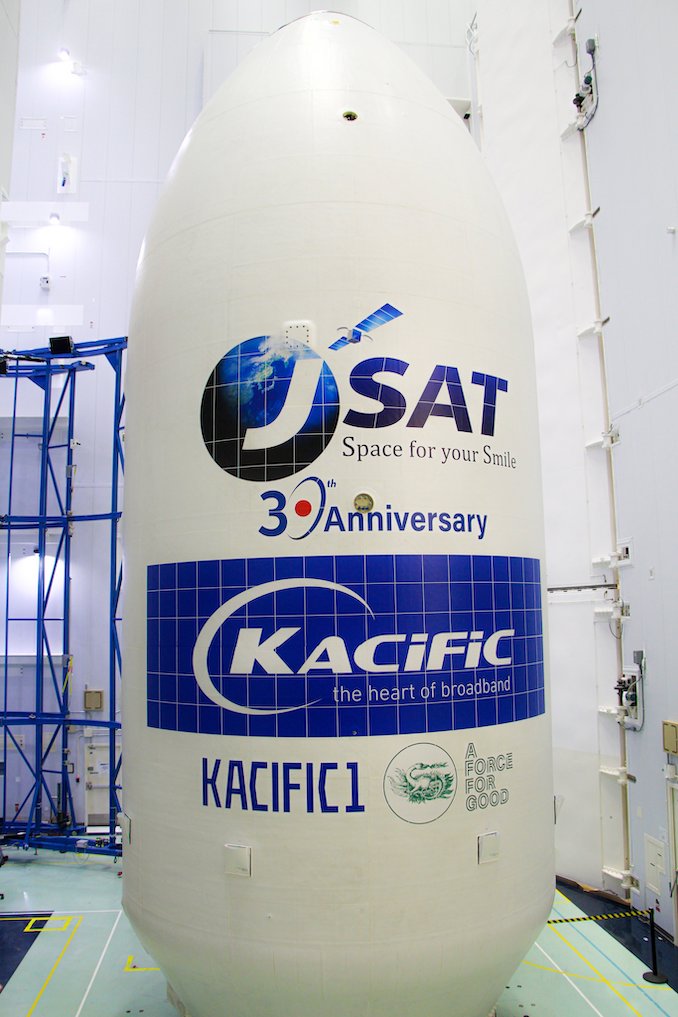
Watch Ken’s continuing reports onsite for live reporting of the upcoming Starliner OFT mission & SpaceX JCSAT launch at the Kennedy Space Center and Cape Canaveral Air Force Station.
Stay tuned here for Ken’s continuing Earth and Planetary science and human spaceflight news: www.kenkremer.com –www.spaceupclose.com – twitter @ken_kremer – email: ken at kenkremer.com
Dr. Kremer is a research scientist and journalist based in the KSC area, active in outreach and interviewed regularly on TV and radio about space topics.
………….
Ken’s photos are for sale and he is available for lectures and outreach events
Ken’s upcoming outreach events:
Dec 15/17/19: 7 PM, Quality Inn Kennedy Space Center, Titusville, FL. “Boeing Starliner Launches to ISS & SpaceX JCSAT launch.” Free. In hotel lobby. Photos for sale
